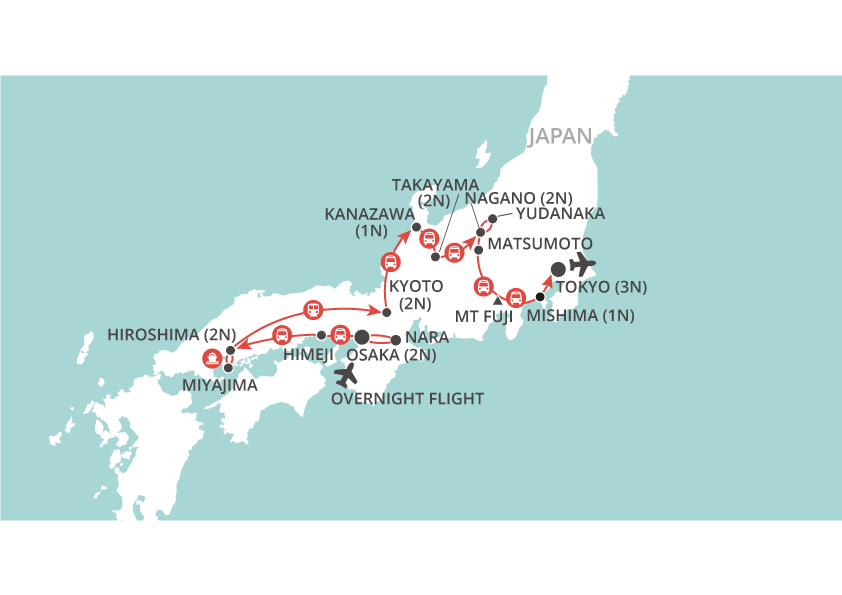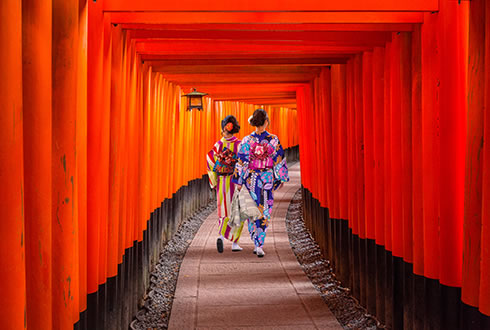This iconic hilltop castle, dating back four centuries to the Edo Period, lies 60 miles west of Kyoto in Himeji, Hyōgo Prefecture. It is the largest castle in modern Japan and also known as the ‘White Heron Castle’ because of its stunning white fa?ade. You may also recognise it from the 1967 James Bond film, ‘You Only Live Twice’, in which it was used as the setting of the Japanese intelligence service’s fictional ‘ninja training camp’.
Himeji Castle is a prime example of Japanese feudal architecture, having been first established as a fort in the 14th century, and extensively redeveloped in the 17th century at the beginning of the 265-year Edo Period (also known as the Tokugawa Shogunate period). Defended by a vast network of walls, gates, moats, baileys, mazes and arrow-slits, and clad in its distinctive fireproof white plaster (dozo-zukuri), it served as a private residence, political centre, military garrison and armoury.
The castle has guarded the western approach to Kyoto for centuries; however, as no battles were fought here, it is now the best-preserved example of a medieval castle in Japan. Many Tokugawa-supporting fortresses were destroyed following the 1868 Fall of Edo (Tokyo), when power was stripped from the Tokugawa Shogunate and fully restored to the teenage Emperor Meiji. We are very lucky that Himeji Castle survived for us to enjoy today.
Today, Himeji-jo remains one of Japan’s most significant and beloved castles; in 1993, it was honoured as Japan’s first UNESCO Heritage listed site, and the recent cleaning and restoration of the keep’s beautiful white colour has left it more photogenic than ever. It’s no surprise that this magnificent castle often finds itself at the top of visitors’ must-see lists.



Read our latest articles or travel inspiration, exciting news about our destinations and all things Wendy Wu Tours








